
How to Use Red led: Examples, Pinouts, and Specs
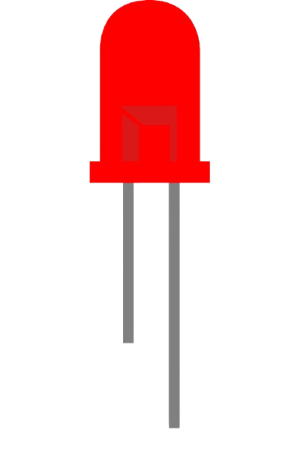
 Design with Red led in Cirkit Designer
Design with Red led in Cirkit DesignerIntroduction
The Lina Red LED (Part ID: 1) is a light-emitting diode that emits red light when an electric current passes through it. This component is widely used in electronic circuits for visual indicators, status displays, and decorative lighting. Its compact size, low power consumption, and long lifespan make it an essential component in various applications.
Explore Projects Built with Red led
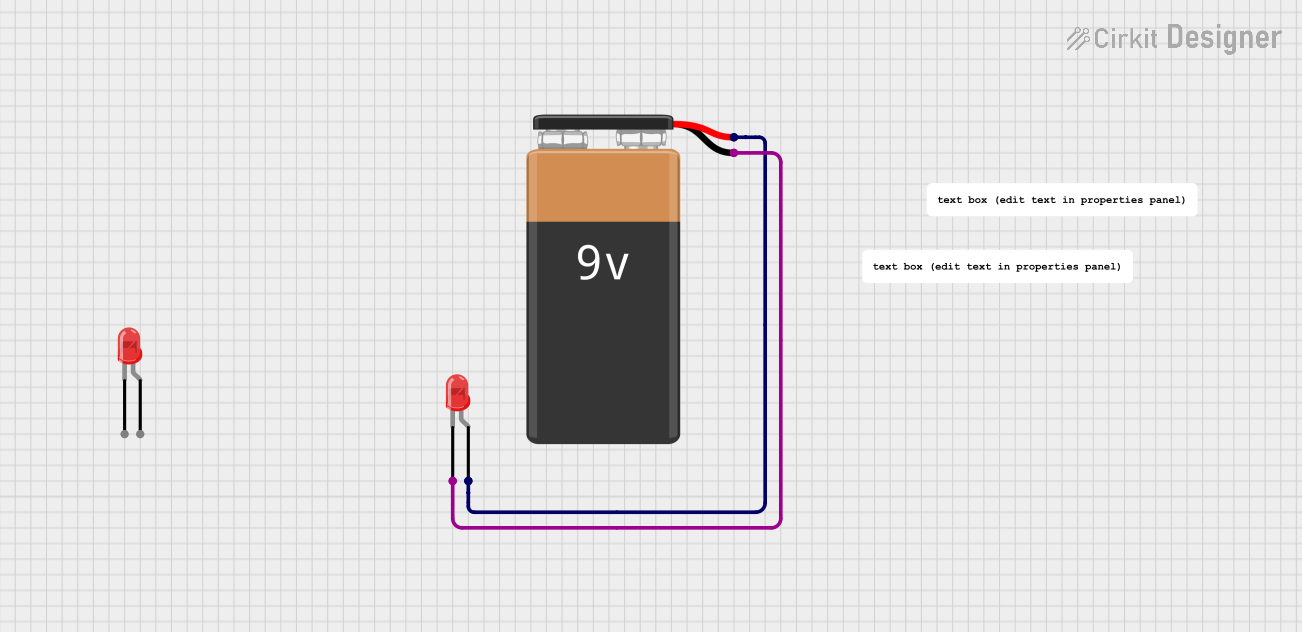
 Open Project in Cirkit Designer
Open Project in Cirkit Designer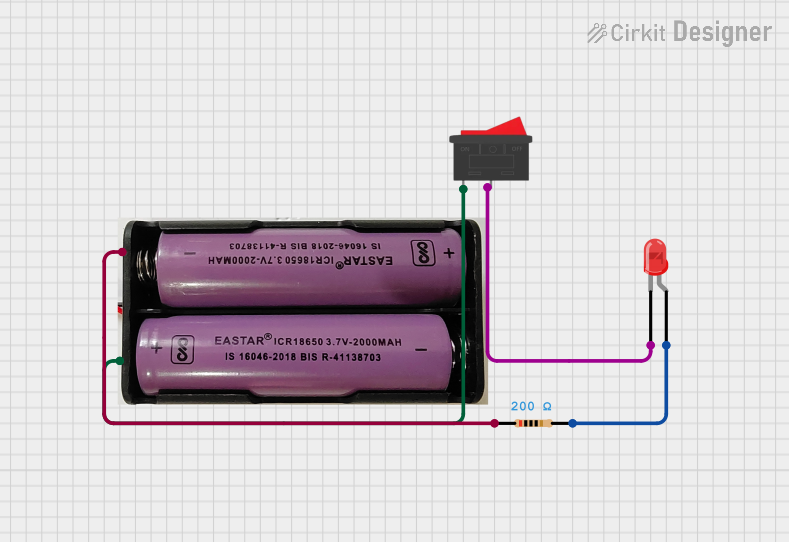
 Open Project in Cirkit Designer
Open Project in Cirkit Designer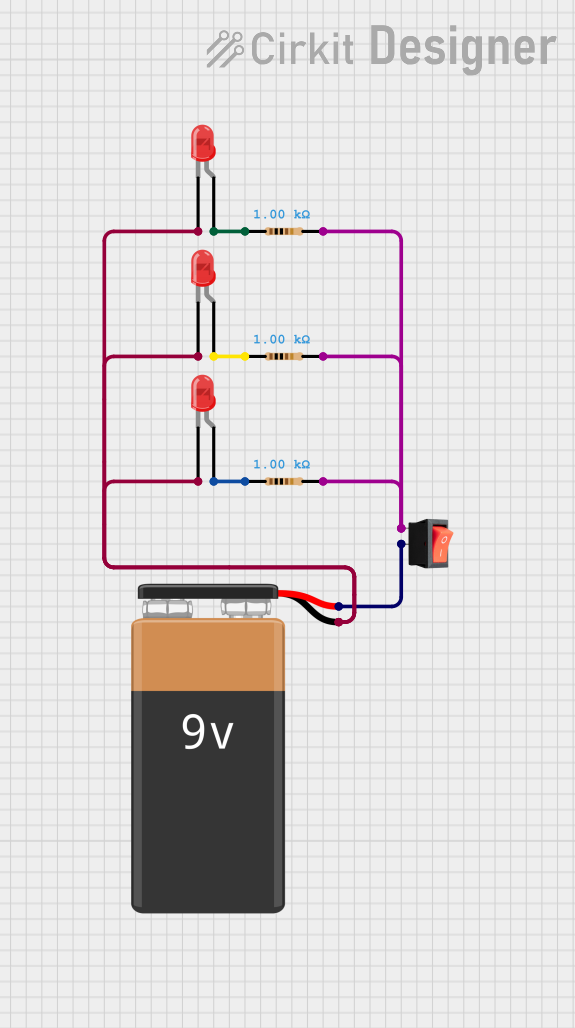
 Open Project in Cirkit Designer
Open Project in Cirkit Designer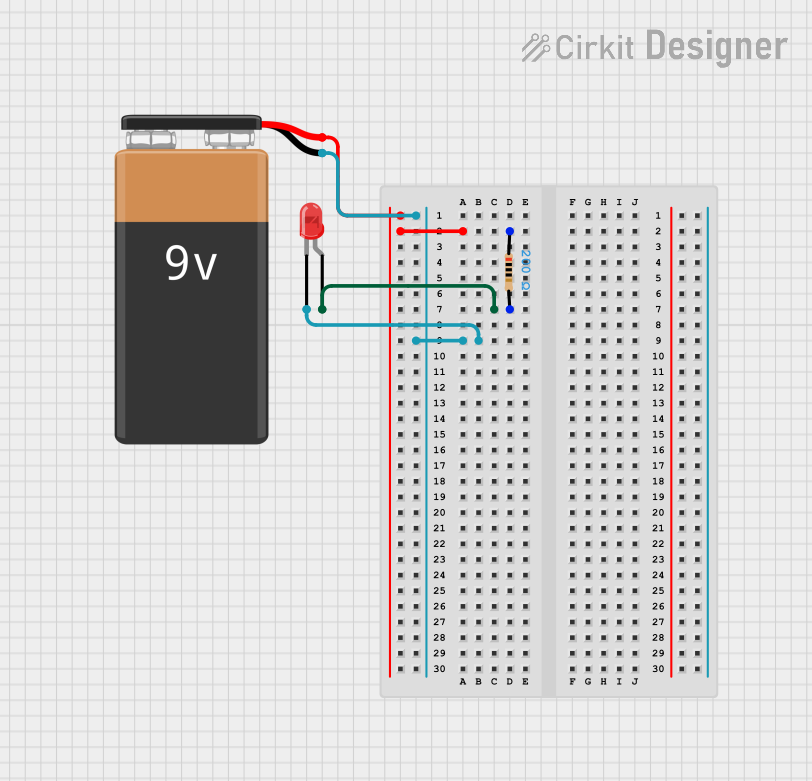
 Open Project in Cirkit Designer
Open Project in Cirkit DesignerExplore Projects Built with Red led

 Open Project in Cirkit Designer
Open Project in Cirkit Designer
 Open Project in Cirkit Designer
Open Project in Cirkit Designer
 Open Project in Cirkit Designer
Open Project in Cirkit Designer
 Open Project in Cirkit Designer
Open Project in Cirkit DesignerCommon Applications
- Power and status indicators in electronic devices
- Digital displays and signage
- Decorative and ambient lighting
- Circuit debugging and testing
- Educational projects and prototyping
Technical Specifications
Below are the key technical details for the Lina Red LED (Part ID: 1):
| Parameter | Value |
|---|---|
| Forward Voltage (Vf) | 1.8V to 2.2V |
| Forward Current (If) | 20mA (typical) |
| Maximum Current (Imax) | 30mA |
| Wavelength | 620nm to 630nm (red light) |
| Viewing Angle | 20° to 30° |
| Power Dissipation | 75mW |
| Operating Temperature | -40°C to +85°C |
| Storage Temperature | -40°C to +100°C |
Pin Configuration
The Lina Red LED has two pins:
| Pin Name | Description |
|---|---|
| Anode (+) | Positive terminal; connect to power supply or resistor. |
| Cathode (-) | Negative terminal; connect to ground. |
Note: The longer leg of the LED is the anode (+), and the shorter leg is the cathode (-). If the legs are trimmed, the flat edge on the LED casing indicates the cathode (-).
Usage Instructions
How to Use the Red LED in a Circuit
Determine the Resistor Value: To prevent damage, always use a current-limiting resistor in series with the LED. Use the formula: [ R = \frac{V_{supply} - V_f}{I_f} ] Where:
- (V_{supply}) is the supply voltage.
- (V_f) is the forward voltage of the LED (1.8V to 2.2V).
- (I_f) is the desired forward current (typically 20mA).
For example, with a 5V supply: [ R = \frac{5V - 2V}{0.02A} = 150\Omega ]
Connect the LED:
- Connect the anode (+) to the positive terminal of the power supply through the resistor.
- Connect the cathode (-) to the ground.
Power the Circuit: Apply the supply voltage, and the LED will emit red light.
Important Considerations
- Polarity: LEDs are polarized components. Reversing the polarity may damage the LED.
- Current Limiting: Always use a resistor to limit the current and prevent overheating.
- Brightness Control: Use a pulse-width modulation (PWM) signal to adjust brightness.
- Series/Parallel Configurations: For multiple LEDs, calculate resistor values for each configuration.
Example: Connecting the Red LED to an Arduino UNO
Below is an example of how to connect and control the Lina Red LED with an Arduino UNO:
Circuit Setup
- Connect the anode (+) of the LED to Arduino digital pin 9 through a 220Ω resistor.
- Connect the cathode (-) of the LED to the Arduino GND pin.
Arduino Code
// Example code to blink a Lina Red LED connected to pin 9 of Arduino UNO
const int ledPin = 9; // Define the pin connected to the LED
void setup() {
pinMode(ledPin, OUTPUT); // Set the LED pin as an output
}
void loop() {
digitalWrite(ledPin, HIGH); // Turn the LED on
delay(1000); // Wait for 1 second
digitalWrite(ledPin, LOW); // Turn the LED off
delay(1000); // Wait for 1 second
}
Note: Adjust the resistor value and delay times as needed for your specific application.
Troubleshooting and FAQs
Common Issues
LED Does Not Light Up:
Cause: Incorrect polarity.
Solution: Ensure the anode (+) is connected to the positive voltage and the cathode (-) to ground.
Cause: No current-limiting resistor or incorrect resistor value.
Solution: Use a resistor with the correct value to limit the current.
LED is Dim:
- Cause: Insufficient current.
- Solution: Check the resistor value and ensure the supply voltage is adequate.
LED Overheats or Burns Out:
- Cause: Excessive current.
- Solution: Use a resistor to limit the current to 20mA.
Flickering LED:
- Cause: Unstable power supply or loose connections.
- Solution: Check the power source and ensure all connections are secure.
FAQs
Q1: Can I connect the LED directly to a 3.3V or 5V power supply?
A1: No, you must use a current-limiting resistor to prevent damage to the LED.
Q2: How do I calculate the resistor value for a different supply voltage?
A2: Use the formula (R = \frac{V_{supply} - V_f}{I_f}), where (V_f) is the forward voltage and (I_f) is the desired current.
Q3: Can I use the Lina Red LED for PWM dimming?
A3: Yes, the LED can be dimmed using a PWM signal from a microcontroller like Arduino.
Q4: What happens if I reverse the polarity of the LED?
A4: The LED will not light up, and prolonged reverse polarity may damage the component.
By following this documentation, you can effectively use the Lina Red LED (Part ID: 1) in your projects and troubleshoot common issues.